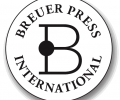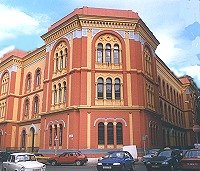Two generations have passed since the end of World War II. Today we live in an age of information, instant communication and progressive technology. The benefits to be garnered from the free flow of heterogeneous information – which can be overwhelming on a day-to-day basis – are counterbalanced by an unavoidable side effect: the creation of short memories. Young people today regard the past not in the sense of where they have come from, but rather as a bygone series of events which are „past,” while they themselves are living „post.” This viewpoint is dangerous in that it is disjunctive rather than connective. In the face of cultural universalism characteristic of an open-market economy, hyper-consumerism, the world communications revolution and a flood of boundary-reducing tourism, local cultures are struggling to maintain their own uniqueness. The generation that lived through the Holocaust is dwindling. The presence of witnesses – the remnant who survived – ensured a certain moral strength; their absence creates a moral, cultural and educational vacuum. What will be the fate of Holocaust commemoration among members of the fourth generation, both Jewish and non-Jewish? What place will it occupy in the midst of the currents that are sweeping us along through the third millenium? Will remembrance be meaningful in the context of contemporary events? How should we prepare ourselves at this historic juncture? Such basic questions confronted Yad Vashem as we planned our strategy to meet the challenges of the third millenium. „Yad Vashem 2001” masterplan seeks to provide an answer to both present and future aims and requirements. In the spirit of the Jewish tradition of „Vehigadeta Lebincha” („And you will tell your children”), Yad Vashem places a heavy emphasis on educating the younger generations about the Holocaust. More than ever before, today’s youth are expressing a keen interest in their own personal history and identity. We at Yad Vashem have always believed that it is our responsibility to provide Jewish youngsters with the history of the Holocaust from a Jewish perspective. As we begin a new century, Yad Vashem is addressing this need by developing the tools needed to perpetuate the dialogue between past, present and future. Today, new technologies and display systems expand the horizons of communication. The generation of the future is immersed in a world of stimulating, high-impact media. We must relate to the visitors of the 21st century in their language. Every visitor leaves Yad Vashem with a personal impression of an event that has universal dimensions. Yad Vashem is the pioneer of Holocaust museums world-wide; Yad Vashem 2001 carries on in this tradition. By preserving its Jewish character within the universal context, and yet maintaining an authentic voice composed of testimonies, diaries, artifacts and other documentation, Yad Vashem paves the way for a better future. Avner Shalev Directorate BPI-info
Chairman of the Yad Vashem
2005. július 14 13:47














